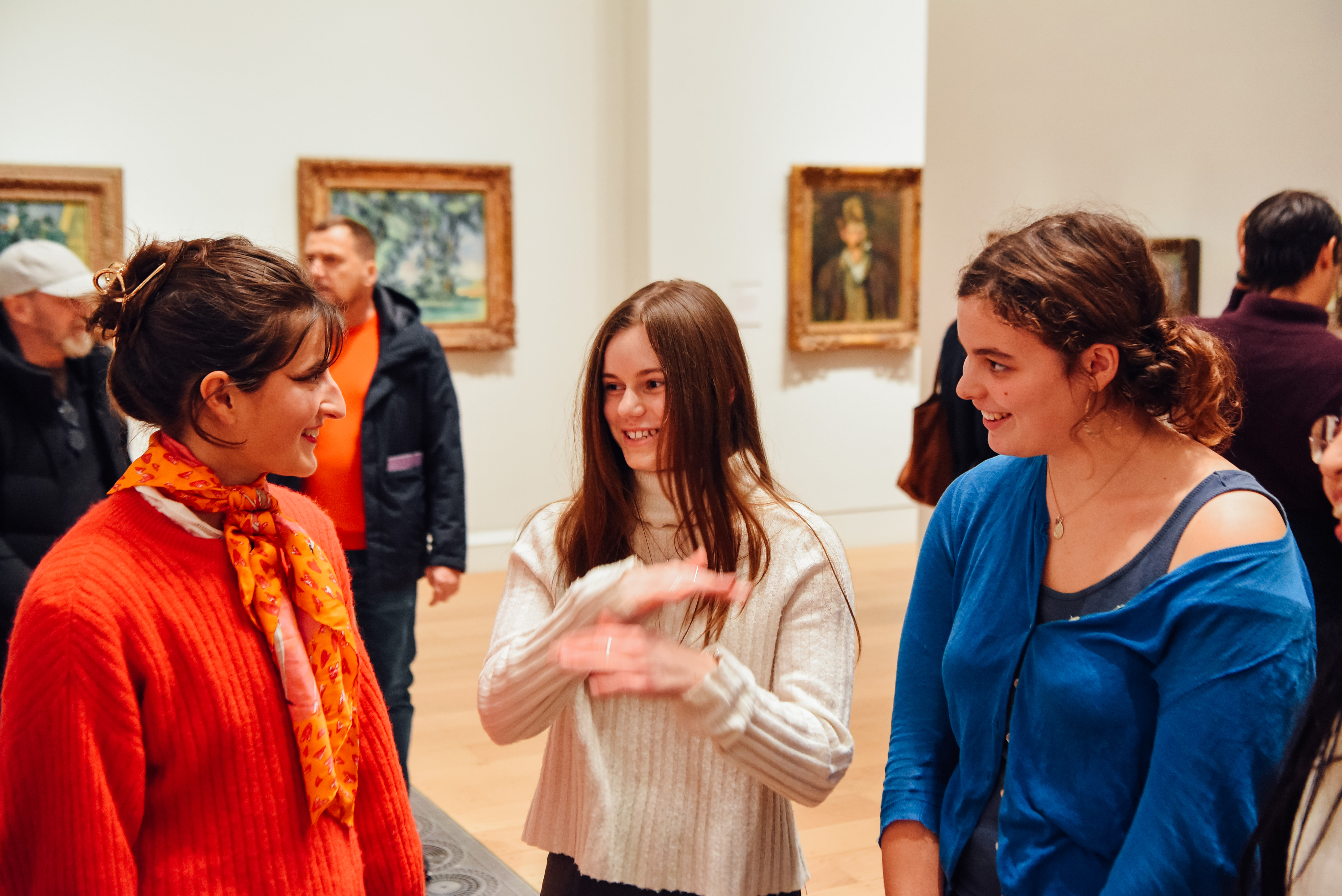
What is our Art History for Everyone programme and is it right for you? Read on to find out more….
By Ludo Amory, Education and Outreach Officer
Applications are currently open for our Art History for Everyone programme, so I thought I’d take the opportunity to explain more about the course. It’s easy enough to describe it as a free Art History A Level and EPQ course for state-sponsored sixth-form students, but what is it really like?
I’ve been teaching this course for eight years, in venues including the Wallace Collection and the National Gallery. We’re now based at the Courtauld and online, giving us incredible access to the Courtauld Gallery’s collection, which includes well-known names like Claude Monet and Paul Gauguin to others you might discover for the first time, such as Vanessa Bell and Parmigianino. It is a world-class collection and over the year students really get to know the collection, building a lasting sense of belonging. Developing your ability to assess a work of art and your visual literacy is key to Art History A level, while being exploratory and creative is at the heart of the EPQ so being based at the Courtauld provides the right environment and stimulus.
Our classes run on Saturdays during term times and students join us either for the morning or afternoon. For those who join in person we are based in the Leon Kossoff centre at the Courtauld which is part of Somerset House on the Strand but as we also teach the course online students can be based across the UK. We’ve provided hybrid teaching since 2020 and it works very successfully indeed so that even our online students get to explore the Gallery!
Our teaching style is different from school. Each session has a main teacher, but much of the learning happens in smaller discussion groups led by teaching assistants. This means students can talk directly to professional art historians, sharing and developing their ideas. In Art History, unlike in maths or science, there is rarely one “right” answer, so discussions are open-ended and every contribution is valued. I often find my own thinking about artworks I have studied for years is transformed by the fresh perspective of students encountering them for the first time.
The course covers a huge range, from Mexica turquoise mosaics to the architecture of a London swimming pool! Across the course you can study the dramatic Catholic art of the Counter-Reformation, the irreverent art of the Ninteenth Century as well as broad themes including Nature and Identities. Students are often surprised by the works they connect with, as every piece is chosen to spark imagination and critical thinking.
There are plenty of tangible benefits. You can gain an additional A Level, complete an EPQ, and get support for university applications in Art History. The EPQ typically runs over the first year of the course while the A Level is two years long. Our students can take just one, both or neither, depending on their own learning goals.
But for many students, it is the intangible benefits that matter most: the confidence built through small group discussions, the exposure to different careers and pathways, and above all the friendships formed within the cohort. Students come from all backgrounds, but they connect through a shared love of art. Many make lifelong friends and build networks of mutual support that last well beyond the course.
Whether or not they go on to study Art History or work in the creative sector, our students leave with a deeper appreciation for the visual culture that surrounds us.
But don’t just take it from me, here is what one of last year’s students said:
“I met my now best friend in an AHLU summer school, and our friendship has only strengthened as we progressed through the course this year. AHLU is beautiful for this reason, collecting like minded and equally passionate students from across the UK to discuss universal human connection through art. I have got a tour de Britain planned this summer to visit lots of online AHLU friends!”
So finally, if this sounds like an appealing and exciting opportunity then do apply here: Art History A Level and EPQ. Applications for our 2025–26 academic year are open until 5pm on Friday the 5th of September
Art History is under threat
We believe art history should be for everyone, however fewer than 1% of state supported secondary schools offer Art History A Level. As a result, there is a lack of diversity in the arts sector and an increasing skills shortage. We are the only charity offering formal Art History teaching to school-aged students from all backgrounds. Your financial support will ensure that everyone has an opportunity to study art history: together we can transform the future of the arts.




